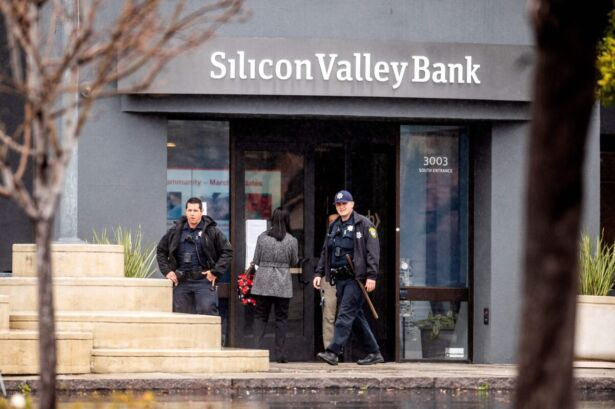Nearly 200 more banks could be vulnerable to the same type of risk collapsed Silicon Valley Bank earlier this month, according to a recently published study.
Researchers with the Social Science Research Network found there are 186 banks across the United States that could collapse if half their respective uninsured depositors withdraw their funds. The Federal Deposit Insurance Corporation insures deposits up to $250,000, although the agency agreed to insure deposits worth far more than that after SVB’s collapse this month.
“Combined, losses and uninsured leverage provide incentives for an SVB uninsured depositor run,” said an abstract of the paper. “We compute similar incentives for the sample of all U.S. banks. Even if only half of uninsured depositors decide to withdraw, almost 190 banks are at a potential risk of impairment to insured depositors, with potentially $300 billion of insured deposits at risk. If uninsured deposit withdrawals cause even small fire sales, substantially more banks are at risk. Overall, these calculations suggest that recent declines in bank asset values very significantly increased the fragility of the US banking system to uninsured depositor runs.”
Insured depositors of those banks could also see problems trying to withdraw their cash if those financial institutions face a bank run, the paper (pdf) said. Researchers noted those banks hold a large amount of their assets in government bonds and mortgage-backed securities, which are highly reactive to interest rates that have been raised significantly over the past year by the Federal Reserve.
“Our calculations suggest these banks are certainly at a potential risk of a run, absent other government intervention or recapitalization,” the economists wrote.
Their study evaluated banks’ asset books around the United States, finding an estimated $2 trillion discrepancy in their overall market value. It also noted that uninsured depositors are a major source of funding for commercial banks and account for about $9 trillion of their liabilities, meaning that bank runs on these institutions could present a “significant risk.”
“As interest rates rise, the value of a bank’s assets can decline, potentially leading to bank failure through two broad, but related channels,” they wrote. “First, if a bank’s liabilities exceed the value of its assets, it may become insolvent. This is particularly likely for banks which need to increase deposit rates as interest rates rise. Second, uninsured depositors may become concerned about potential losses and withdraw their funds, causing a run on the bank.”

Other Details
Other than SVB, Signature Bank of New York also collapsed. Last week, California-based First Republic Bank received an infusion of $30 billion from some of the top U.S. banks in a package that was backed by the Biden administration after its stock plunged after SVB’s collapse, triggering fears that financial contagion would spread elsewhere to regional banks.
In a news release, Bank of America, Citigroup, JPMorgan Chase, Wells Fargo, Goldman Sachs, Morgan Stanley, BNY-Mellon, PNC Bank, State Street, Truist, and U.S. Bank said they would provide the bank with the cash. Those deposits will be uninsured.
Some have blamed the banks’ troubles on the Federal Reserve’s rapid installments of rate hikes to tamp down decades-high inflation. Bank stocks other than First Republic have also suffered significantly over the past several days—with Switzerland’s Credit Suisse plummeting to record-low levels earlier this month.
SVB Financial Group confirmed March 17 it filed for Chapter 11 bankruptcy protection and will seek buyers for its assets, coming after its Silicon Valley Bank division was taken over by federal regulators. The company said it has some $2.2 billion of liquidity, coming after it ended last year with over $200 billion in assets.
Before the FDIC stepped in, SVB customers attempted to withdraw $42 billion in one day on March 9 amid concerns about the bank’s overall health.
Also on March 17, Treasury Secretary Janet Yellen told lawmakers in a Senate Finance Committee hearing that Americans’ bank savings and deposits “remain safe” amid the nascent financial turmoil. The Treasury Department and other federal agencies, she added, are committed to ensuring that the U.S. banking system is sound.
“I can assure the members of this committee that our banking system remains sound, and that Americans can feel confident that their deposits will be there when they need them,” Yellen told the senators in a prepared statement. “This week’s actions demonstrate our resolute commitment to ensure that depositors’ savings remain safe.”
From The Epoch Times
